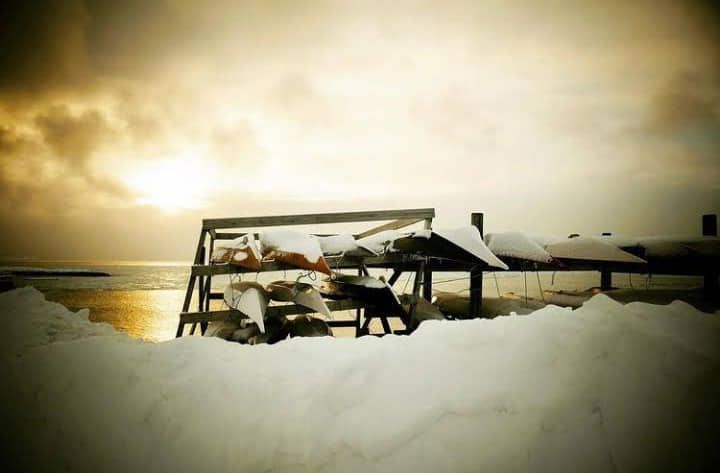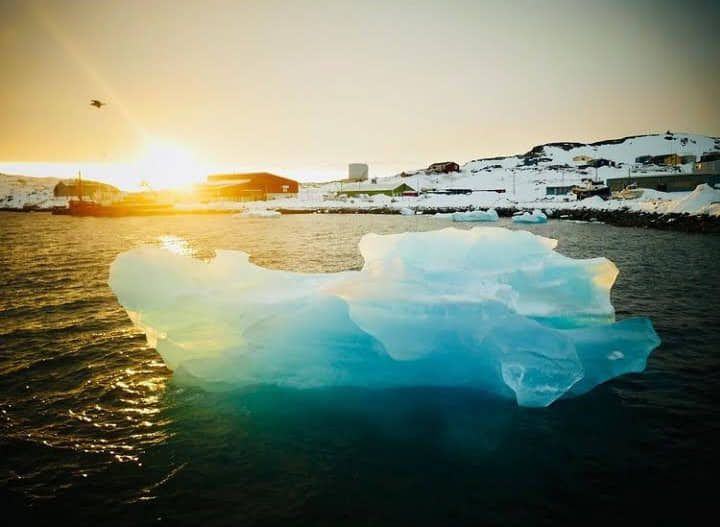
Den tyske isbryder Polarstern har nået Nordpolen. Skibet fulgte en kurs nord om Grønland og krydsede et område, der tidligere var dækket af tyk is i flere år. Turen til Nordpolen var virkelig alarmerende. Og det viser, hvor alvorlig situationen i Arktis er lige nu.
The German icebreaker Polarstern has reached the North Pole. The ship followed a course north of Greenland and crossed an area that had previously been covered by thick ice for several years. The trip to the North Pole was really alarming. And it shows how serious the situation in the Arctic is right now.

Polarstern-isbryderen tog afsted til Nordpolen i oktober 2019 med et noget mærkeligt mål: at blive fanget i arktisk havis og drive hjælpeløst af havstrømme. I et år ville forskerne flyde ombord på Polarstern i det arktiske hav, forankret til havisen, og indsamle data om polarområder og havisen. Missionen for ekspeditionen, der bærer navnet Drifting Multidisciplinary Observatory for the Study of Arctic Climate (MOSAIC),
The Polarstern icebreaker set off for the North Pole in October 2019 with a somewhat strange goal: to be caught in Arctic sea ice and drift helplessly by ocean currents. For a year, the scientists would float aboard the Polarstern in the Arctic Ocean, anchored to the sea ice, and collect data on polar regions and the sea ice. The mission of the expedition, called the Drifting Multidisciplinary Observatory for the Study of Arctic Climate (MOSAIC),

er at opnå bedre klima- og vejrudsigter. Konsekvenserne af klimaændringer er særligt tydelige i Arktis; et område, der opvarmes dobbelt så hurtigt som resten af jorden. Derfor satte forskerne ud med en vigtig mission i denne frosne region: at studere klimaændringer i Arktis, konsekvenserne af havisens forsvinden, atmosfæren og det lokale økosystem.
is to achieve better climate and weather forecasts. The consequences of climate change are particularly clear in the Arctic; an area that heats up twice as fast as the rest of the earth. Therefore, the researchers set out with an important mission in this frozen region: to study climate change in the Arctic, the consequences of the disappearance of sea ice, the atmosphere and the local ecosystem.

de har nået deres endelige destination. Og det var overraskende nemt. Rejsen gennem Fam-strædet, et stræde mellem Grønland og Svalbard, til Nordpolen tog kun seks dage. "Jeg var meget overrasket over at se, hvor blød isen var op til 88 grader nordlig bredde, og hvor let vi kunne krydse den," sagde kaptajn Thomas Wunderlich.Men selv efter at have overskredet 88 breddegrader, holdt vi generelt en fart mellem fem og syv knob: Jeg har aldrig set noget så langt mod nord."
they have reached their final destination. And it was surprisingly easy. The journey through the Fam Strait, a strait between Greenland and Svalbard, to the North Pole took only six days. "I was very surprised to see how soft the ice was up to 88 degrees north latitude and how easily we could cross it," said Captain Thomas Wunderlich. But even after exceeding 88 degrees latitude, we generally kept a speed between five and seven knots: I have never seen anything so far north. "